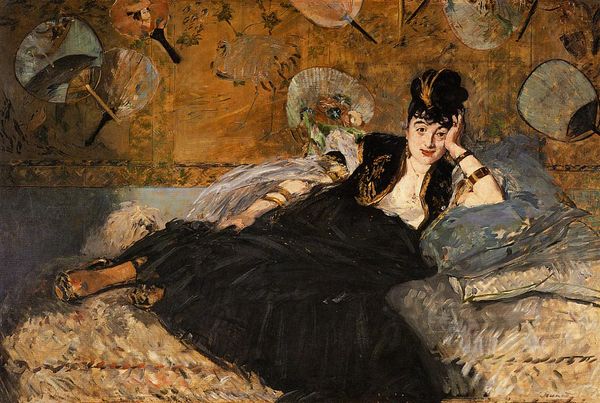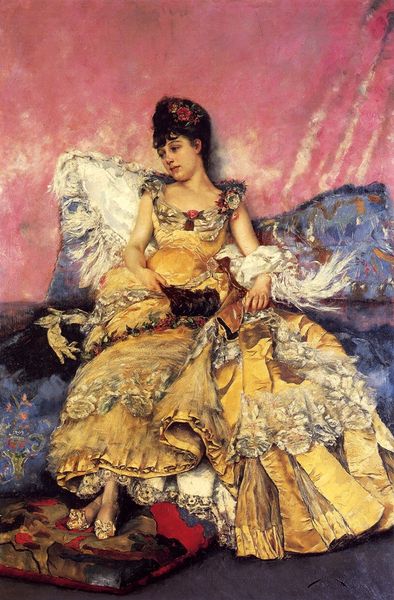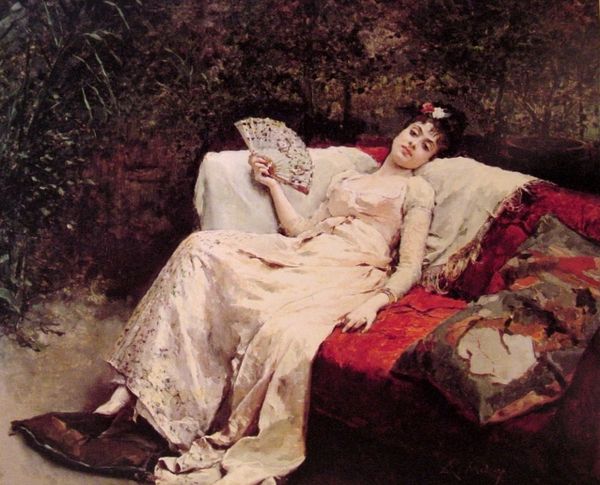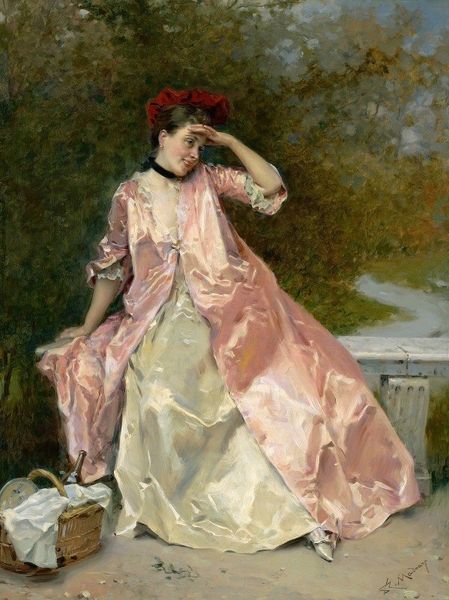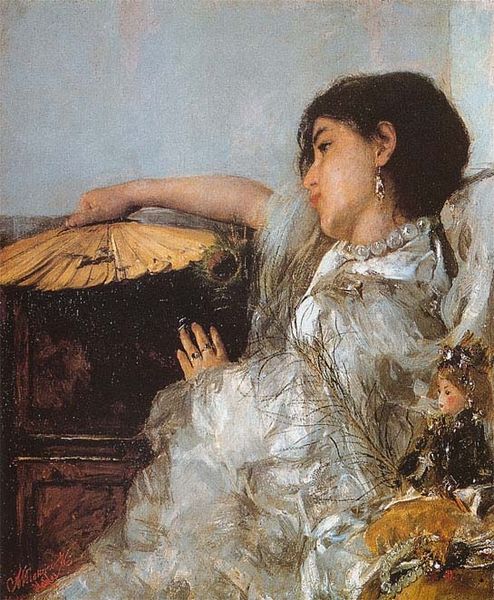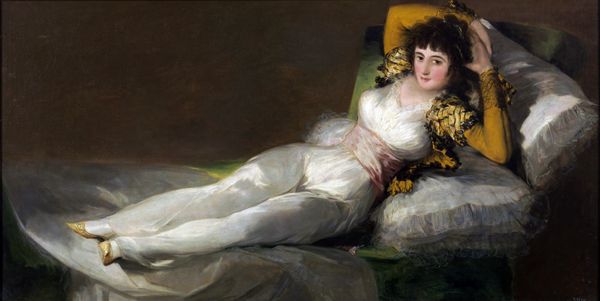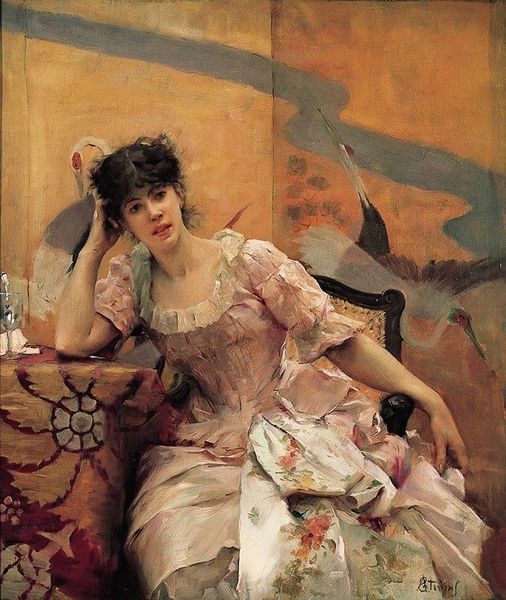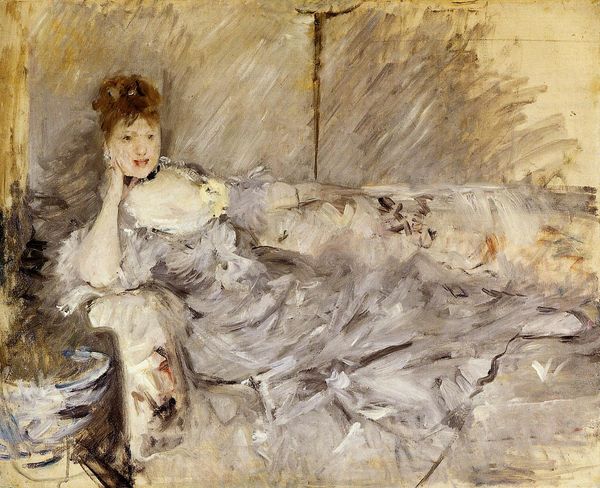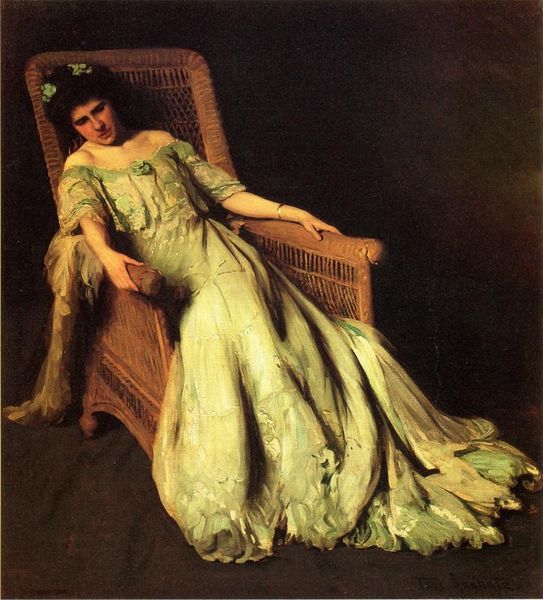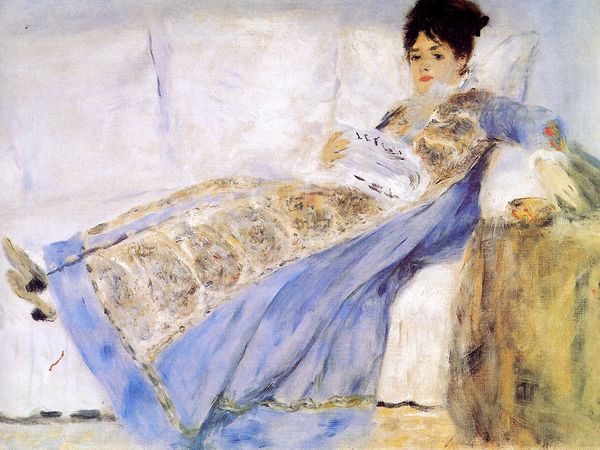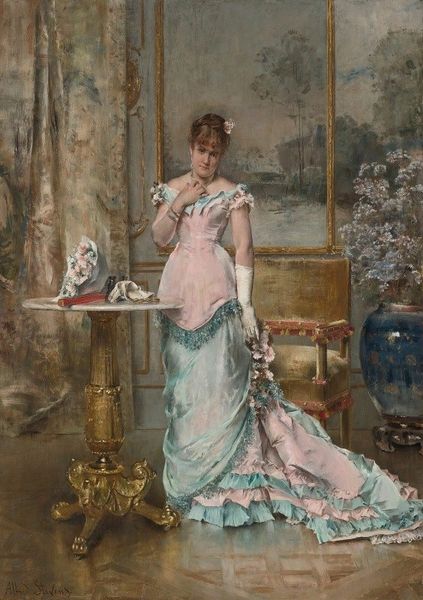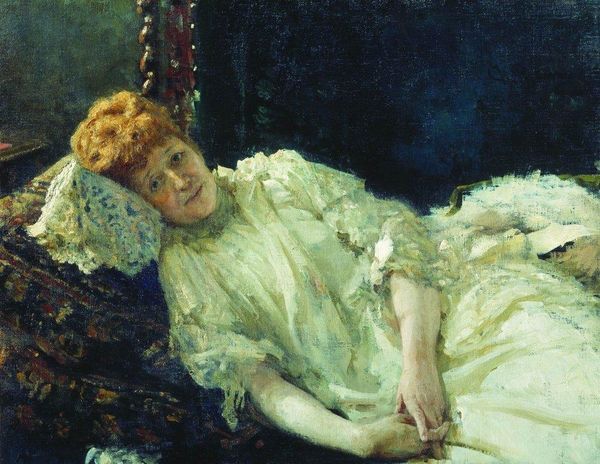
Dimensions: 49.5 x 62.2 cm
Copyright: Public domain
Editor: Julius Leblanc Stewart's "Lady On A Pink Divan," painted in 1877 using oil on canvas, depicts a woman reclining, seemingly lost in thought. The mood feels melancholic, doesn't it? What's your interpretation of this work, given its historical context? Curator: It is difficult not to imagine that, even framed within its academic style, "Lady On A Pink Divan" invites us to consider the role of women in late 19th-century society. Do you notice how she is presented? She is not actively engaged in any activity but reclining, perhaps reflecting a limited agency available to women of her social class. The discarded letter suggests an emotional narrative. How does this contrast with, say, contemporaneous depictions of working-class women? Editor: That's interesting! I hadn't considered the letter as a symbol of limited choices. I was just caught up in the beautiful brushwork of her gown. So, you're saying that even in a seemingly straightforward portrait, we can unpack issues of gender and class? Curator: Precisely. Stewart was American but trained in Paris, a space rife with burgeoning feminist thought. Can we read this as a subtle commentary, perhaps not overtly revolutionary, but quietly subversive, reflecting societal constraints while simultaneously showcasing the beauty and inner life of its subject? What do you make of the interior, this enclosed space? Editor: It does feel like a gilded cage. I learned that even within "academic art," social commentary can be woven into the visual narrative. Curator: Exactly. This painting becomes a valuable tool for exploring societal norms, expectations, and constraints placed on women during that era. By analyzing these works, we not only appreciate the artistic skill involved, but also enrich our comprehension of the position of women during an era of huge transformation.
Comments
No comments
Be the first to comment and join the conversation on the ultimate creative platform.
